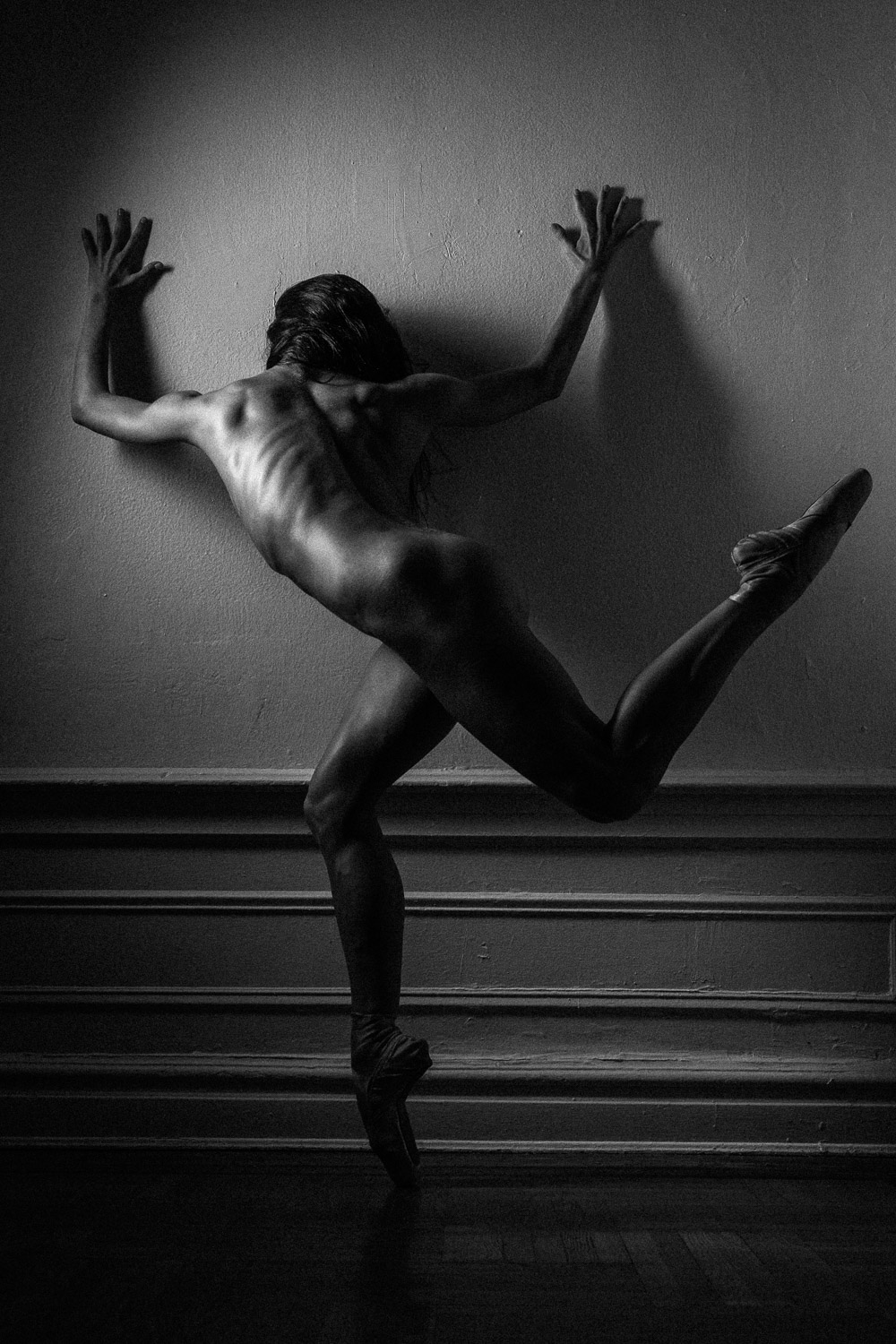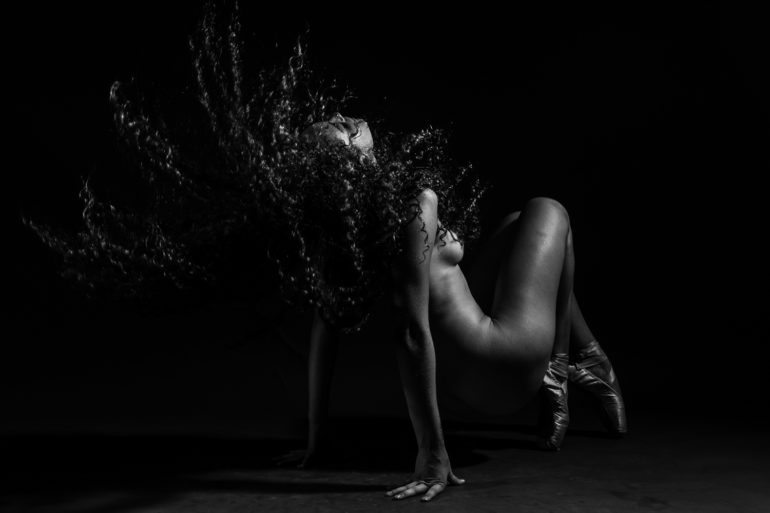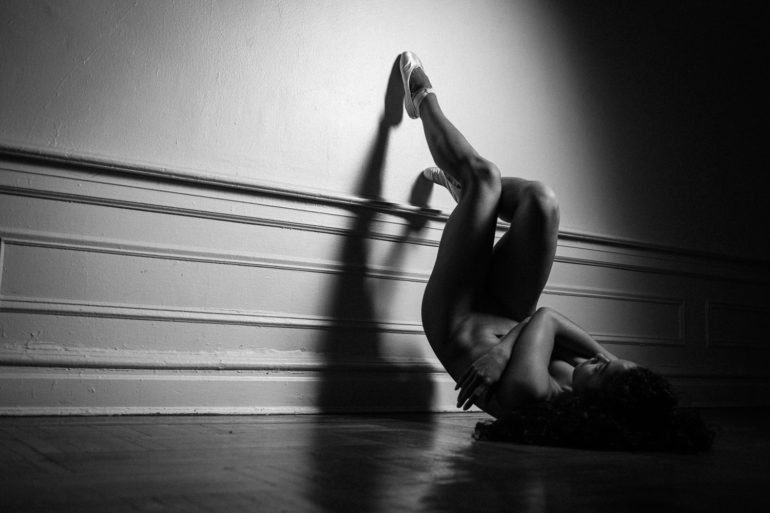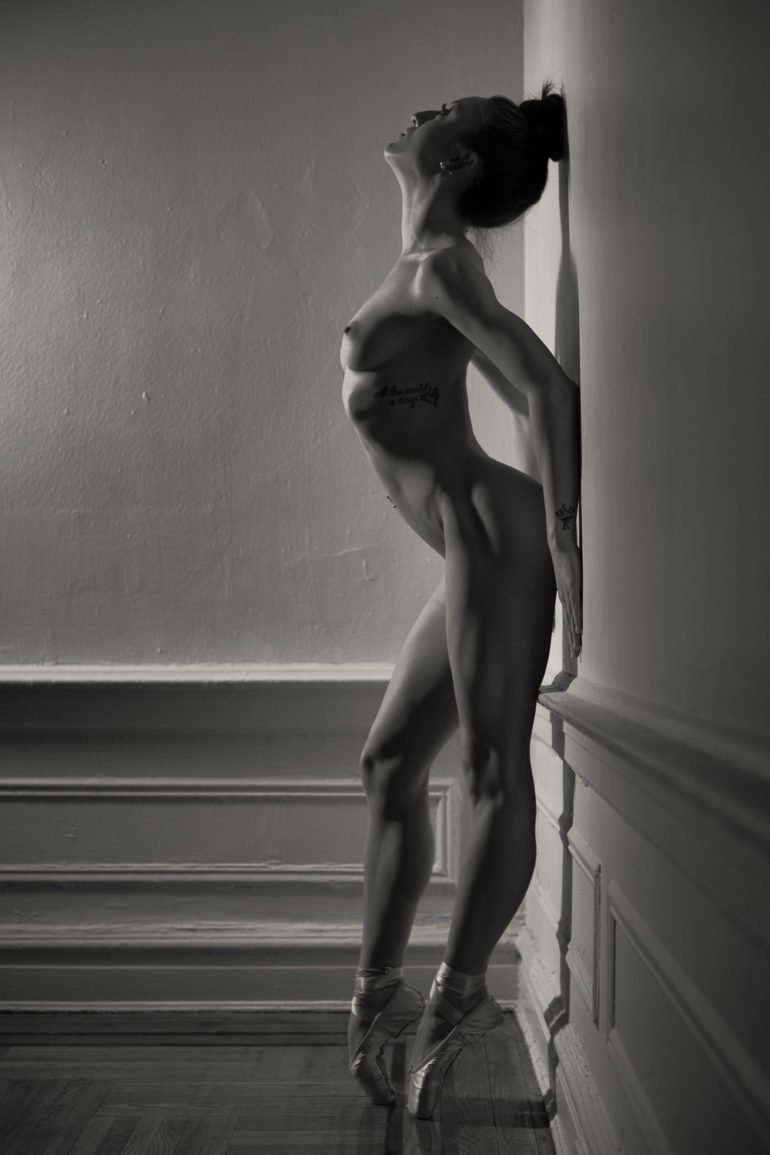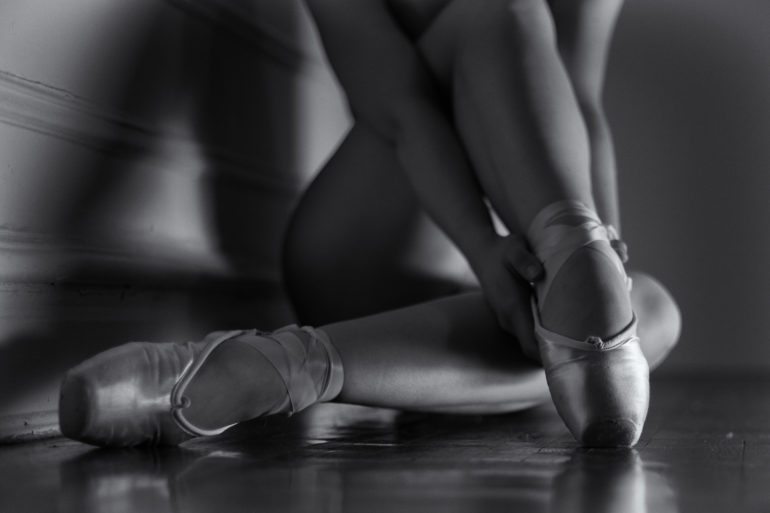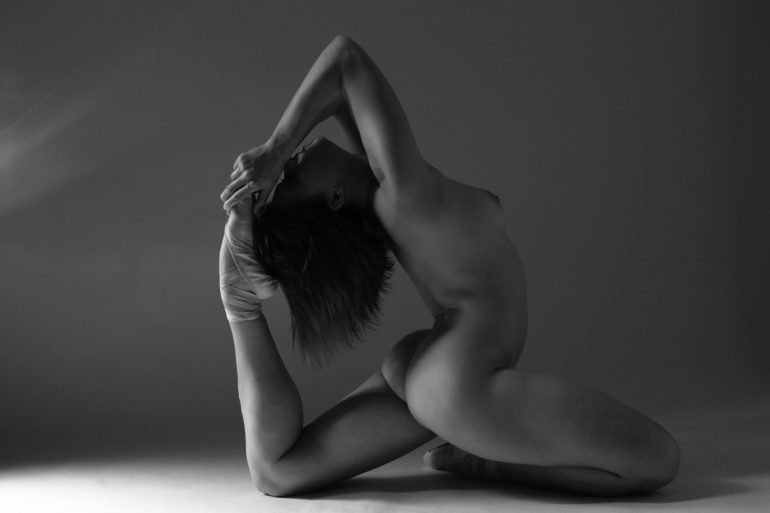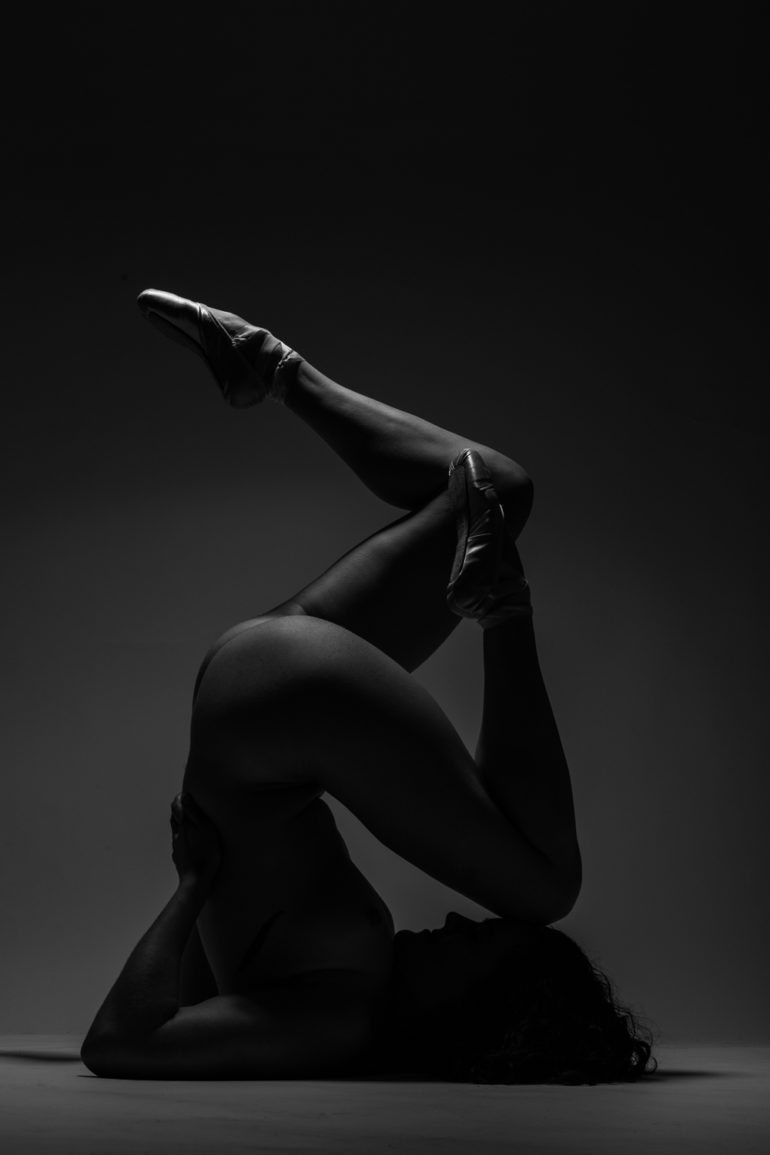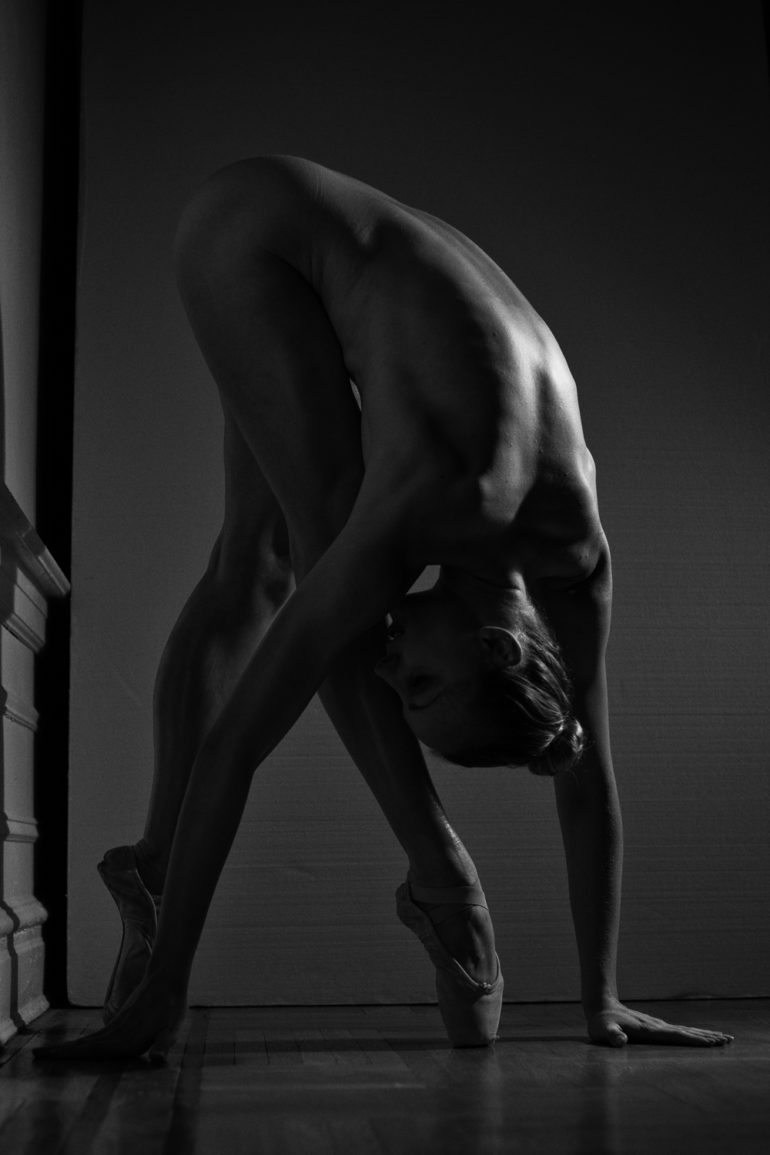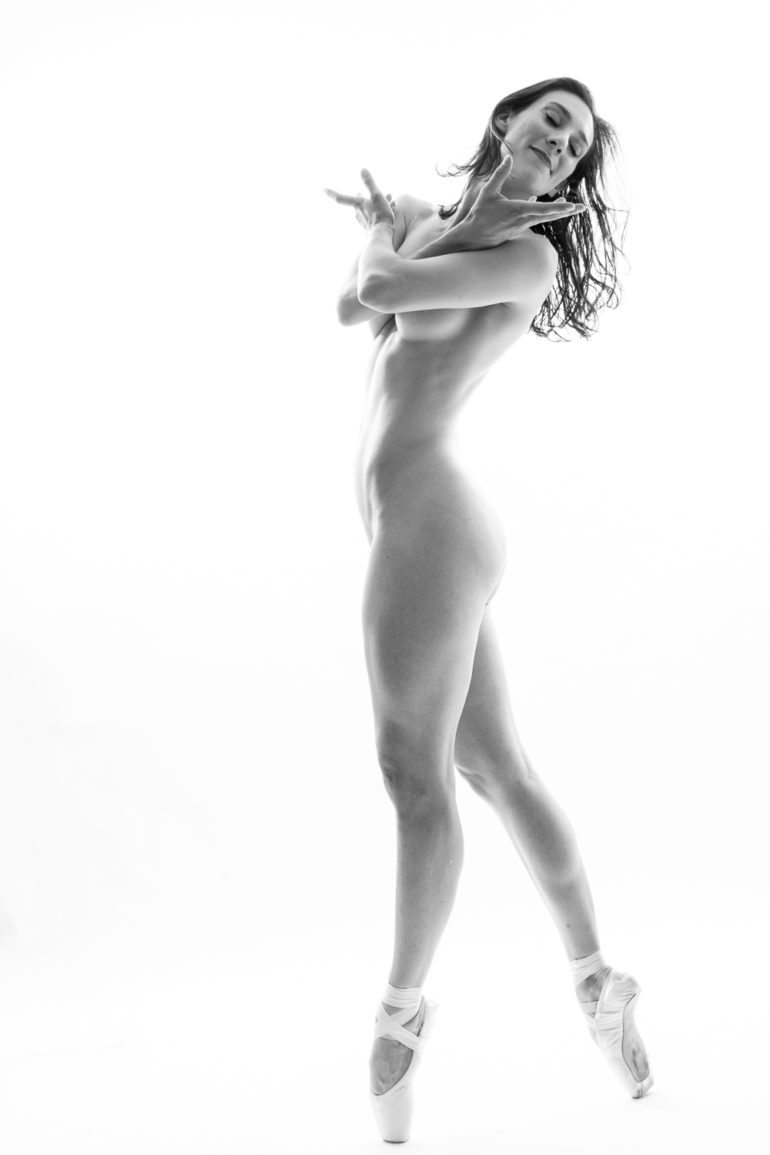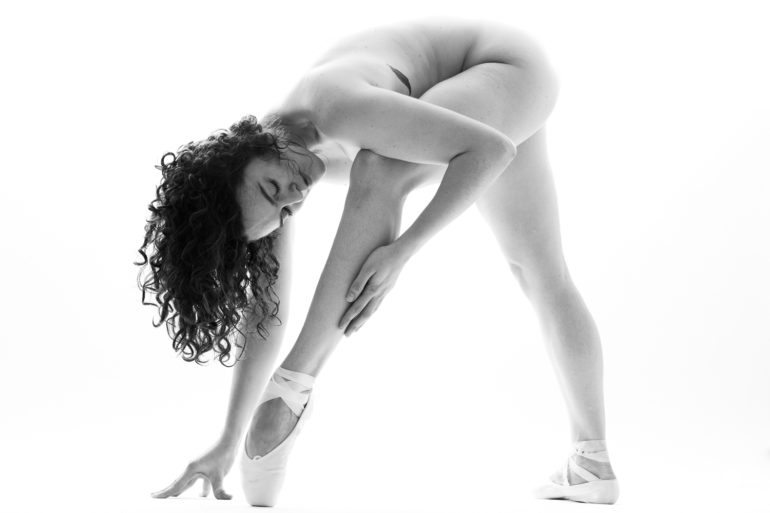Last Updated on 05/29/2023 by StateofDigitalPublishing
All images by Theik Smith. Used with permission.
“My lighting style is borne from a mish-mash of influences; movies, comic books, fashion – oh, goodness, I love, love, LOVE Horst P. Horst and Richard Avedon!” says photographer Theik Smith. Theik is based in Brooklyn and is a fight coordinator, writer and photographer. His work is quite interesting with its specific use of lights, darks, and some forms of contrast more or less. It’s almost as if he spotlights certain areas of his photos, reaches out to you, and beckons you to look in a specific spot.
That’s exactly what many artists do–except that Theik finds a way to also create interesting shapes and use figures in visually striking ways.
Phoblographer: Talk to us about how you got into photography?
Theik: I got into photography in probably one of the most roundabout ways: I was that kid with a point and shoot film camera all throughout my adolescence, with a great chunk of my allowance money going towards batteries and film and money for the pharmacist to develop my shots, all the way through high school. I then moved on to other things when my trusty Olympus point and shoot died, right before the Great Big Digital Revolution. I got into acting and then fight directing, which carried me all the way through college.
When I got my first “real” fight choreographer gig for a film, I was immensely disappointed with how my fight scene turned out. I found myself unable to translate the concepts in my head into effective communication with the Camera Operator and Director of Photography (DP). I kept on working as a fight choreographer/stunt coordinator on short films, Independent movies, and webseries all over town, and eventually decided that the best way for me to better my craft, what I needed to do was to buy a DSLR and start filming my own fights. So, I bought a Canon t3i for WAY too much money at the time, and swore to learn as much as I could about cameras and lenses.
Mind you, this was all so that I could learn how to talk to any DP or Camera Operator on a set that I was called in to work for!
And, it worked! I was able to talk framing, offer intelligent suggestions for lens choices, and just generally learn to appreciate amazing cinematography all the more. Around the same time, I realized that some of the best cinematographers were also absolutely amazing photographers. I took a look at my trusty t3i and decided that I was going to get back into photography, immediately.
September 2012, right around my birthday, I had my first portrait session with a buddy of mine at dusk. The shots are absolute crap.
I love them fiercely to this day. I haven’t looked back since.
Phoblographer: What made you get into portrait photography?
Theik: I honestly love people. Don’t ask me to shoot landscapes or architecture or real estate. I don’t have the patience or the eye for it – more of the former than anything else. But, I love working with people. And, I love the challenge when someone tells me, “Aww, man, I hate taking pictures. I always look awful!” Man, you tell me that, and I’m going to work like HELL for you, to prove you wrong. I want everyone to have great pictures of themselves. I want people to see themselves the way that we see them at their very best. Recently, I had a corporate headshot gig and I taught this computer programmer how to pose, offered him a quick tip on what to do with his eyes and made him laugh. Took four frames of the guy and showed it to him – and, his stunned, jubilant response of, “Oh my God – that’s good. That’s really good. This is the best picture I’ve ever had of me,” made my DAY.
Those moments of people feeling great about how they look – especially if they’ve always felt dread and fear and sadness when it comes to looking at themselves – is what drives me.
Phoblographer: What inspires your specific lighting style and how do you feel that it helps you creatively express yourself?
Theik: My lighting style is borne from a mish-mash of influences: movies, comic books, fashion – oh, goodness, I love, love, LOVE Horst P. Horst and Richard Avedon! – and I try very hard not to over do it. I’m also a little bit of a gearhead and I absolutely love learning and experimenting with new lighting techniques and modifiers. But, I temper all of that with a simple question: what’s the story, here? With my series, “Pointe Is Truth,” as much as it’s dependent on the physicality, skill, strength and technique of the dancer in front of the camera, if we can’t see the pointe shoes being lit well, then the image doesn’t work for me.
At the end of the day, I’m a storyteller. As much as I would like to be known as a clever Lighting Guy (still working on that!), I would rather people react to the images as a whole rather than the cleverness (or, luck!) behind them.
Phoblographer: What makes black and white photography so important to you?
Theik: I feel that it strips away unnecessary information. It makes you focus on shapes and forms and tones. It’s classic and timeless.
I’ll be perfectly honest: when I first started learning to shoot, I felt that black and white photography in the digital age was a cop-out. I’d seen too many examples of crap photos that were desaturated without care so that the photographer could claim it was “art.” Then, I started to really devour the work of both modern and legendary masters, found much better shooters to follow and during the course of my own work, I discovered my own love for black and white photography.
Let’s also be honest: some of the most iconic images we have in our collective culture are black and white photographs, that have withstood the test of time. In fashion, art, photojournalism, there’s something about a black and white shot that transcends a “snapshot” and turns it into a milestone.
Phoblographer: What inspires you to create photographs?
Theik: There’s this itch in me to create stories, especially action-oriented ones. I’m going to blame a steady diet of comic books, detective novels, and action movies. The tropes I gravitate towards to in my own story-telling are usually subcultures, specialized knowledge, power and control and how it’s wielded, and strength. The visual depiction of these things drives me to pick up my camera, I think.
And, there’s something about showing people how strong, beautiful, amazing they are, in an honest way – even if there’s something stylized about it.
Phoblographer: Why is black and white photography so important to our future in the art world?
Theik: Black and white photography is a testament that photography is less about the tools and more about the final product. In a world where the average consumer has access to 16MP cameras in their phones as a standard feature and Instagram fame, and DSLRs coming out with bigger and more impressive chips and a bazillion auto-focus points, black and white photography is testimony to actual skill and a honed eye to create something beautiful in an immediate way.
A crap image that you desaturated does not a good shot make, after all.
But, a beautiful image that you created, that you know can only be done justice in black and white is proof that black and white photography will never go away. That it MATTERS.
It also helps teach photographers to be better at their craft in an incredibly overly colorized world, for one thing. I feel that once a shooter learns how to see a shot PAST the color, once they put it back into their work, they have a reason for it, now. They’ll make better, more informed decisions and will make their work all the better for it.


